Pyeongando Jokbal (평안도족발집)
9.0Km 2021-03-30
174-6, Jangchungdan-ro, Jung-gu, Seoul
+82-2-2279-9759
Pyeongando Jokbal has a history of over 50 years, and is very popular among all the jokbal (pig's trotter) restaurants in the Jangchung-dong Jokbal Street area. The taste is outstanding, making this hard-to-find restauant a favorite among jokbal lovers.
Rawrow - Kwangjang Market Branch [Tax Refund Shop] (로우로우 광장시장)
9.0Km 2024-04-19
Store #239, Gwangjang Market, 88, Changgyeonggung-ro, Jongno-gu, Seoul
-
Obok Dakhanmari - Euljiro Branch(오복닭한마리 을지로)
9.0Km 2021-04-15
32-3, Eulji-ro, 27-gil, Jung-gu, Seoul
+82-2-2285-4578
This is a Korean cuisine located in Cheonggyecheon Stream, Seoul. It sells boiled chicken in clear broth. The best menu at this restaurant is noodle soup with chicken.
Changdeokgung Palace Complex [UNESCO World Heritage Site] (창덕궁과 후원 [유네스코 세계문화유산])
9.0Km 2025-01-17
99 Yulgok-ro, Jongno-gu, Seoul
Changdeokgung Palace was the second royal villa built following the construction of Gyeongbokgung Palace in 1405. It was the principal palace for many kings of the Joseon dynasty, and is the most well-preserved of the five remaining royal Joseon palaces. The palace grounds are comprised of a public palace area, a royal family residence building, and the rear garden. Known as a place of rest for the kings, the rear garden boasts a gigantic tree that is over 300 years old, a small pond and a pavilion.
The palace gained importance starting from the time of Seongjong, the 9th king of Joseon, when a number of kings began using it as a place of residence. Unfortunately, the palace was burned down by angry citizens in 1592 when the royal family fled their abode during the Imjin War. Thanks to Gwanghaegun, the palace was restored in 1611. Even today, it houses a number of cultural treasures, such as Injeongjeon Hall, Daejojeon Hall, Seonjeongjeon Hall, and Nakseonjae Hall.
Changdeokgung Palace’s garden behind the inner hall, called the "Secret Garden," was constructed during the reign of King Taejong and served as a rest area for the royal family members. The garden had formerly been called Bugwon and Geumwon, but was renamed Biwon Garden, or Secret Garden, after King Gojong came into power. The garden was kept as natural as possible and was touched by human hands only when absolutely necessary. Buyongjeong Pavilion, Buyongji Pond, Juhamnu Pavilion, Eosumun Gate, Yeonghwadang Hall, Bullomun Gate, Aeryeonjeong Pavilion, and Yeongyeongdang Hall are some of the many attractions that occupy the garden. The most beautiful time to see the garden is during the fall when the autumn foliage is at its peak and the leaves have just started to fall.
Though it has been treasured by Koreans for centuries, Changdeokgung Palace and its complex was recognized as a World Cultural Heritage site by the UNESCO World Cultural Heritage Committee in December of 1997 during the committee meeting in Naples, Italy.
Jangchung-dong Jokbal Street (장충동 족발 골목)
9.0Km 2019-09-26
176, Jangchungdan-ro, Jung-gu, Seoul
+82-2-2236-9135
The phenomenon of Jangchungdong Jokbal Street started 50 years ago with the opening of two Korean jokbal (steamed pig trotters) restaurants, followed by the influx of new jokbal restaurants during the late 70s and early 80s.
Today, the jokbal restaurants continue to serve one of the most sought Korean food from the main road and the alleyways of the Jangchungdong 1(il)-ga Street area.
Wonjo 1ho Jangchungdong Halmeonijip(원조1호장충동할머니집)
9.0Km 2020-11-17
174, Jangchungdan-ro, Jung-gu, Seoul
+82-2-2279-9979, +82-2-2275-1064
Following his mother’s footsteps, the son of the previous owner is now managing the family business. Opened during the early years of Jokbal Street, the delicious meat at this restaurant is fondly remembered by customers. While the meat itself has almost no fat, the fat portion is extremely soft and savory. This restaurant is also different from the others in that it provides kongnamul-guk (bean sprout soup) with the jokbal (steamed pork hock). Pyeongyang-style naengmyeon (cold noodles) and tteok-mandu-guk (rice cake-dumpling soup) are also delicious. Pyeongyang naengmyeon is cooked to suit South Korean tastebuds. Besides, the noodles and dumplings are hand-made. Despite the restaurants long history, the building of the restaurant is clean and well-maintained as it was being rebuilt after a fire in the 1980s. There are plenty of tables on the first and second floors to accommodate customers, and the third floor is reserved for large groups. Especially noticeable is the clean appearance both inside and out, despite the restaurant’s long history; probably because the building was rebuilt after a fire in the 1980s. Plenty of tables on the first and second floors accommodate customers, and the third floor is reserved for large groups.
Song Won (송원)
9.0Km 2024-03-15
35-4 Dongho-ro 24-gil, Jung-gu, Seoul
+82-2-2275-3118
Song won is a Korean restaurant located in Jangchung-dong Gourmand Alley. They specialize in high-quality Korean beef barbecue such as bulgogi and galbi, seasoned with a variety of 20 different natural ingredients. Additionally, they offer traditional Korean dishes like hot stone pot rice and noodles. Across the street, visitors can find Jangchung-dong Jokbal Street, and both Jangchungdan Park and Jangchung Gymnasium are within walking distance.
Dalkanmari Dwaejihangeun (닭한마리돼지한근)
9.0Km 2021-03-18
33, Dongho-ro, 24-gil, Jung-gu, Seoul
+82-2-2285-5988
A restaurant recommended by members of the Jangchung-dong Cooperative of Shopkeepers. The representative menu is spicy braised chicken. This Korean cuisine is located near Dongguk Univ. Station, Seoul.
Crap Hoe Fish - Jangchungdong Branch (크랩회피쉬 장충동)
9.0Km 2021-03-19
27-4, Dongho-ro24-gil, Jung-gu, Seoul
+82-2-2269-9968
A restaurant where live seafood is prepared and served fast. The representative menu is sliced raw fish. This Korean cuisine is located near Dongguk Univ. Station, Seoul.
Agurang Kkotgerang (아구랑꽃게랑)
9.0Km 2024-03-08
35-7, Dongho-ro 24-gil, Jung-gu, Seoul
+82-2-2263-5554
This is a seafood restaurant specializing in Ganjanggejang (Soy sauce marinated crab). The crab is plump and seasoned to perfection, making it an excellent accompaniment to steamed rice. The restaurant’s Gulgukbap (Oyster and rice soup), a winter favorite, is enhanced with seaweed fulvescens, which is rich in vitamins and iron, making it beneficial for those suffering from anemia. Side dishes include Cheongpomukmuchim (Mung bean jelly salad), Kimchi, and Kongnamulmuchim (Bean sprout salad). Another popular item on the menu is the spicy Agutang (Monkfish soup), filled with springy monkfish.
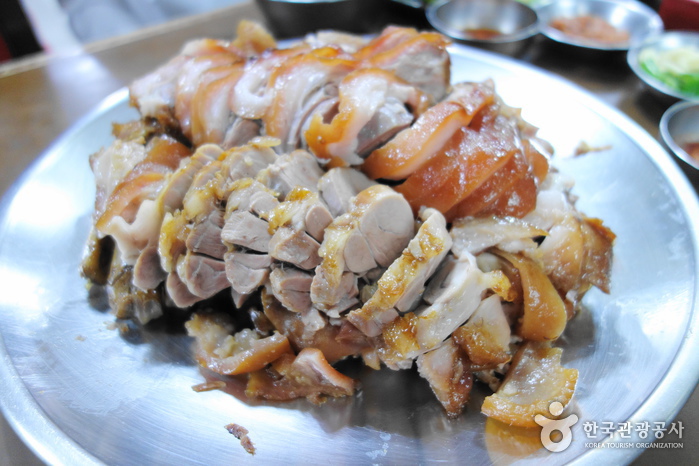
![Rawrow - Kwangjang Market Branch [Tax Refund Shop] (로우로우 광장시장)](http://tong.visitkorea.or.kr/cms/resource/29/2878229_image2_1.jpg)
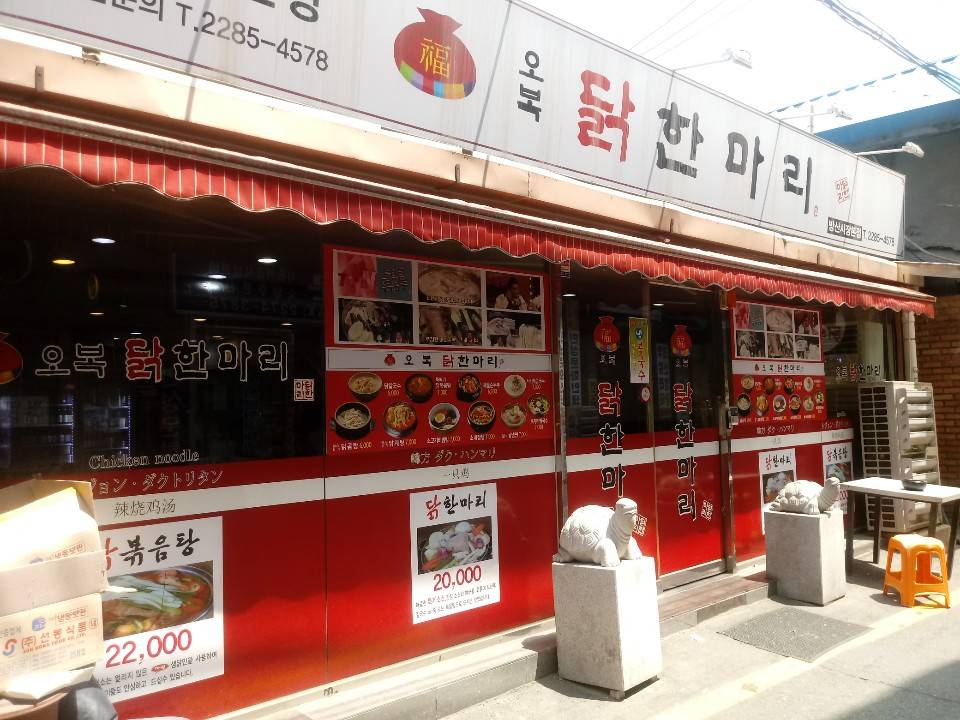
![Changdeokgung Palace Complex [UNESCO World Heritage Site] (창덕궁과 후원 [유네스코 세계문화유산])](http://tong.visitkorea.or.kr/cms/resource/03/3092503_image2_1.jpg)
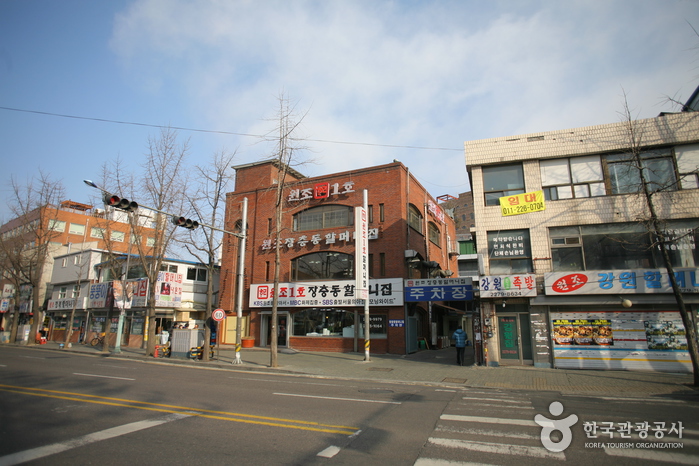
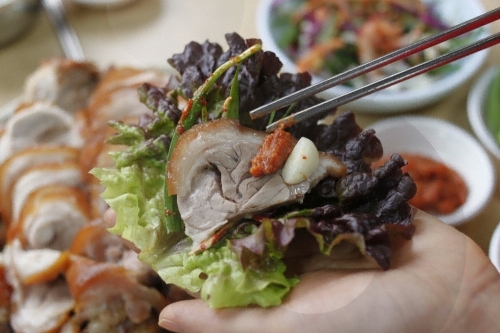

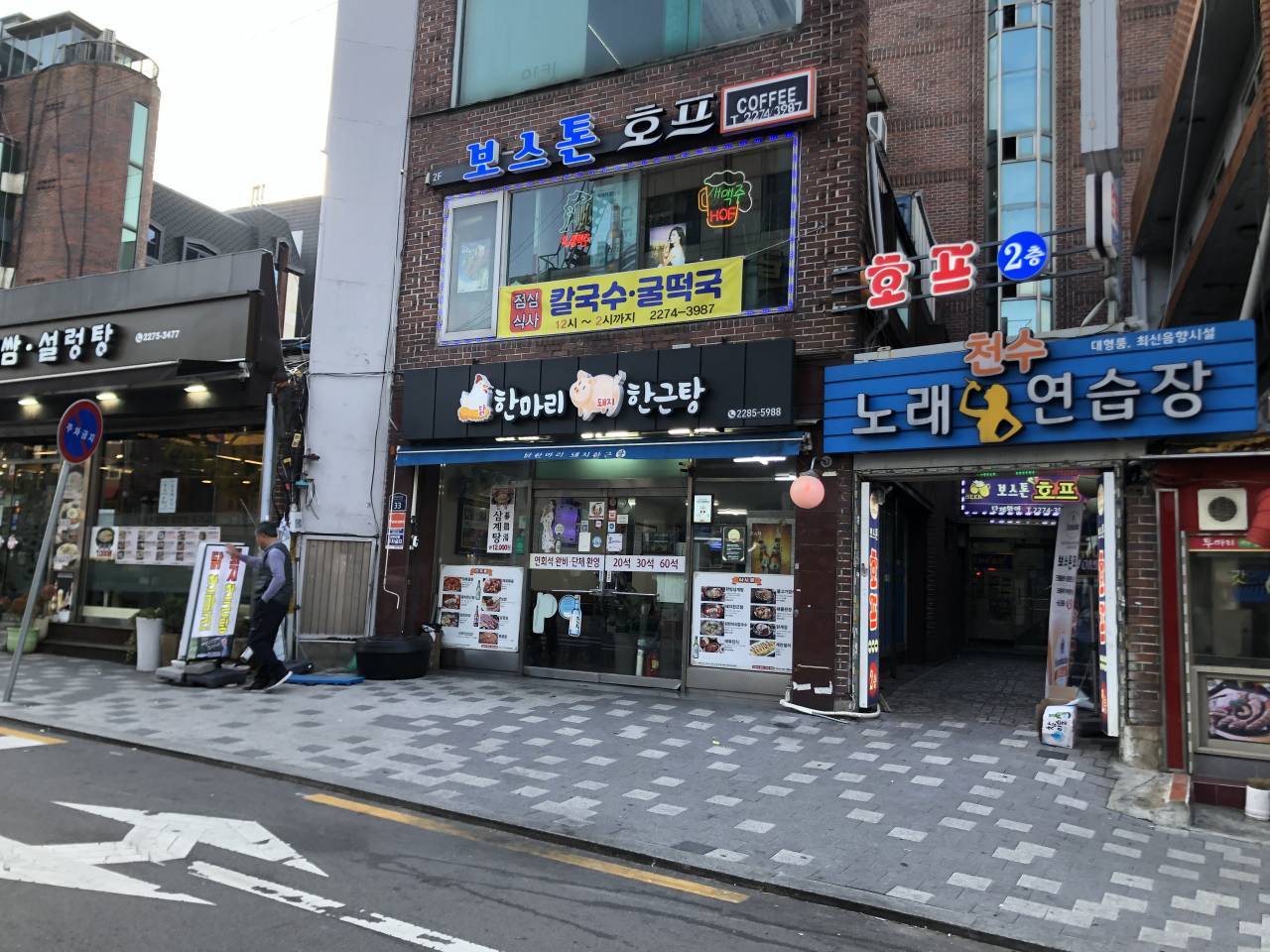
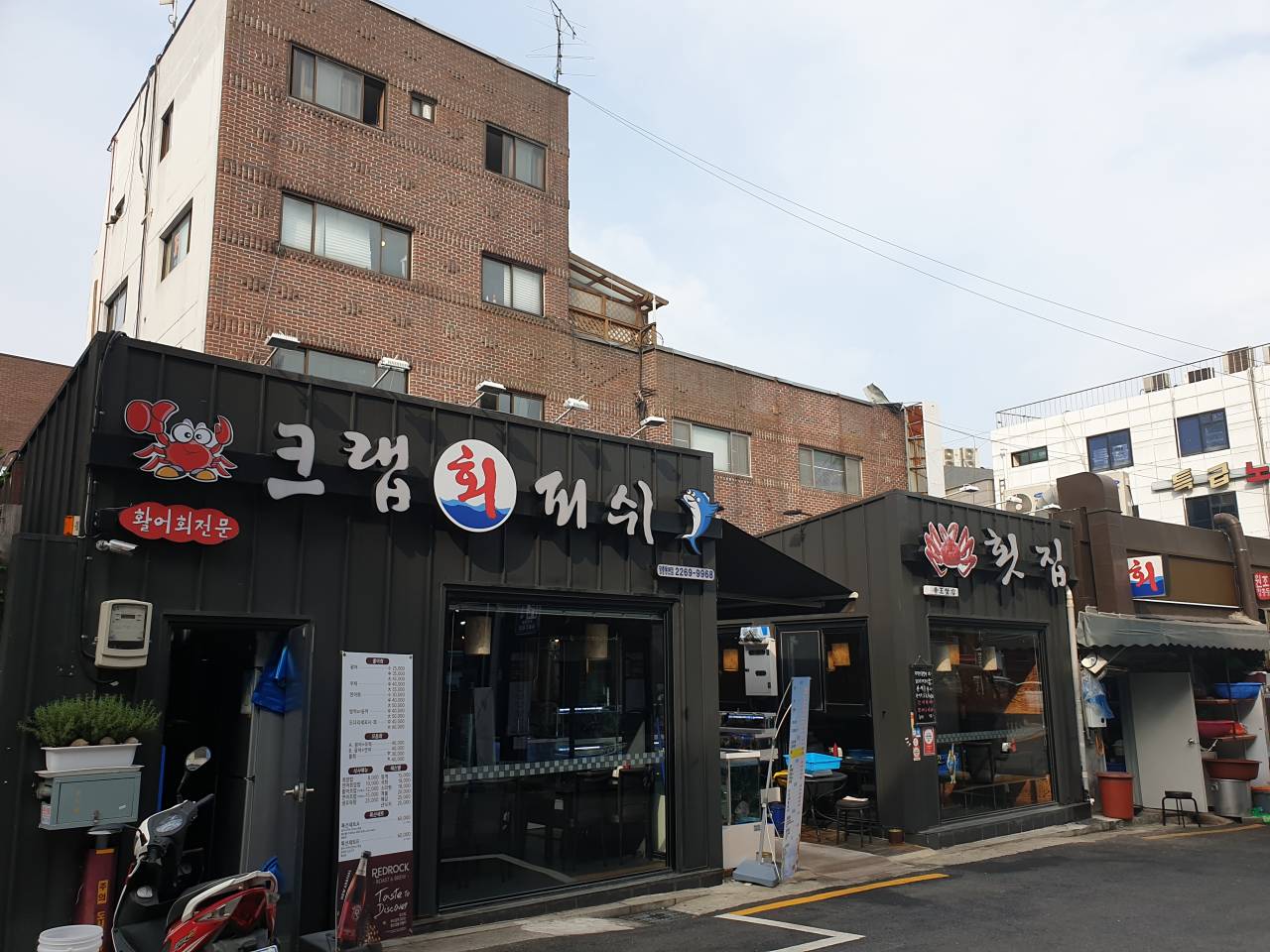
 English
English
 한국어
한국어 日本語
日本語 中文(简体)
中文(简体) Deutsch
Deutsch Français
Français Español
Español Русский
Русский